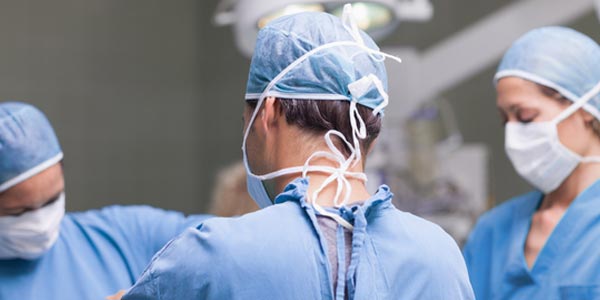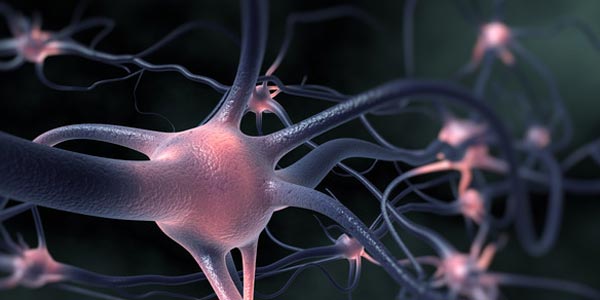
The challenge of SCI
There are millions of people around the world suffering from severe disabilities resulting from traumatic spinal cord injuries (SCI). A common public misconception is that sports activities account for the majority of SCIs, however studies show that the two leading causes of spinal cord injuries are motor vehicle accidents and falls in persons over 65 years of age and older. We are therefore all at risk. Australia unfortunately has one of the highest rates of SCI per capita in the developed world and despite advances in rehabilitative medicine, the quality of life for patients who survive a severe spinal cord injury is poor. At present there are no clinically approved interventions that can promote significant recovery of spinal function after SCI – particularly for patients with long term chronic injuries. However, we believe that is all about to change!

Treatment strategies for chronic neurological disorders
A primary focus of initial phases of funding will be the development of novel, clinically relevant strategies for promoting the formation of new neural circuits (“neuro-plasticity”) within both the brain and spinal cord that can support recovery of neurological functions. As the vast majority of spinal cord injuries are anatomically and functional “incomplete” (i.e. there are surviving circuits), strategies that can support recovery of function through promoting neuro-plasticity offer a rational therapeutic approach for treatment of chronic spinal cord injury. Importantly, neuro-plasticity based therapies developed with StepAhead Australia funds will also be applicable to treatment of a wide variety of chronic neurological disorders such as stroke, traumatic brain injury, cerebral palsy, dementia, amyotrophic lateral sclerosis (ALS) and multiple sclerosis (MS), where formation of new circuits in the brain and spinal cord could feasibly improve neurological function and quality of life.

Spinal Cord Injury Research at the Department of Neuroscience, Monash University, AMREP
Dr. Stephen Davies and his colleague Dr. Jeannette Davies are an internationally renowned spinal cord injury research team whose discoveries have been featured in news articles, books and magazines around the world. The primary focus of the Davies SCI research team is the development and “translation” of nervous system regeneration technologies from the lab to the clinic. Previously at the Florey Institute of Neuroscience and Mental Health, the Davies team have recently been recruited to the Department of Neuroscience at Monash University within the Alfred Monash Research and Education Precinct (AMREP) in Melbourne, established through a $40 million investment in infrastructure, equipment and personnel by Monash University and the Alfred Hospital. An exciting and unique strength of the Department of Neuroscience is that its research scientists and clinicians can conduct early phase clinical trials at the newly constructed Neurology Trials Facility at Alfred Hospital, the first clinical trial centre in Australia to focus on treatment of neurological disorders. We are pleased to announce that Lions Australia have supported the establishment of a new Lions Australia Spinal Cord Fellowship (LASCF) at Monash University.

New breakthrough technologies ready for use in humans
The Davies team have already developed a protein infusion technology that has shown remarkable levels of functional recovery in pre-clinical SCI studies.
- The Davies team have focused on the clinical development of a naturally occurring protein called Decorin to promote nerve fibre regeneration and increased connectivity (“plasticity’) of surviving circuits within the injured central nervous system (CNS: brain and spinal cord). Award winning studies from the Davies team have previously shown that Decorin is highly effective at preventing the formation of scar tissue that can act as barrier to nerve fibre regeneration. Recently however the Davies team have discovered that infusion of human Decorin to cerebrospinal fluid can promote truly remarkable levels of neuro-plasticity and recovery of locomotor function in pre-clinical rodent spinal cord injury models – even when infused to long-term chronic spinal cord injuries (manuscripts in preparation).
- The ability of Decorin to suppress inflammation, scar formation, and promote extensive sprouting of neural circuits, strongly supports the development of Decorin infusion for treatment of a wide variety of other severe neurological disorders such as traumatic brain injury, cerebral palsy and stroke where these multiple benefits could be highly effective at promoting recovery of neural function. As Decorin protein is naturally found within the human nervous system but is suppressed after injury, infusion of the molecule to brain and spinal cord can be considered as being a "protein replacement” technology, much like providing insulin for diabetes patients. Unlike stem cell transplantation therapies which require complex surgeries and are limited in how many times patients can be treated, infusion of Decorin is a relatively simple procedure that could be combined with rehab and delivered multiple times to further improve recovery.
- Forming the right academic, clinical and biotech partnerships is vitally important for efficient translation of scientific discoveries to the clinic. Working closely with biotech partners, the Davies team have recently acquired exclusive access to the world’s best pharmaceutical-grade Decorin. What now remains is for the Davies team to conduct pre-clinical dosing.
An opportunity to lead the world in treatment of neurological disorders
We believe these exciting and highly clinically relevant studies with Decorin reveal the latent capacity of the adult brain and spinal cord to recover given the right intervention and provide strong rationale for funding the translation of newly emerging technologies to use in humans as soon as possible. This is the primary goal of StepAhead Australia's support of the Spinal Cord Injury Research Program at Monash University.



